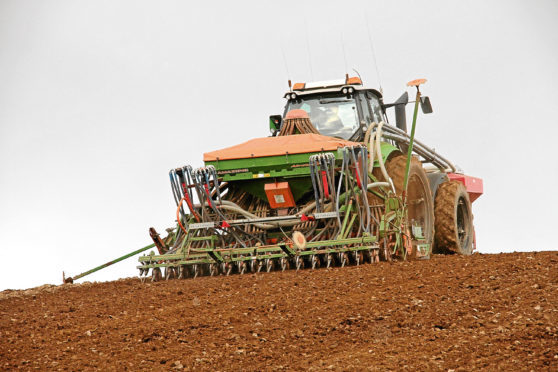The impact of last autumn’s challenging weather on Scotland’s arable farmers has been confirmed by official government statistics which show the area of winter-sown cereals dropped by 11% in the year to December 2017.
The winter barley area, at just over 103,000 acres, was down 20% on 2016 and the lowest since the 1970s, while winter wheat showed a reduction of 11% on the year. There were also reductions in the area planted with oats and oilseed rape.
It is expected that the low areas of winter-sown crops will be made up for by higher spring plantings, but the AHDB’s cereals and oilseeds expert, Gavin Dick, pointed out that the impact of the reduction in winter barley would be felt for many years to come, as rotations have been knocked out of sync.
However he pointed out that the unplanned change to spring plantings was not all bad news.
“A number of growers were quite relaxed about a reduced autumn-drilled area as new spring barley varieties such as Laureate are offering significant yield increases over previous spring varieties, and when combined with malting premiums, gross margins are on a par with winter wheat,” he said.
“The issue will be the availability of spring seed due to extra demand and quality issues caused by last year’s difficult harvest.”
Mr Dick added that the main challenge for growers would be re-establishing their rotations and ensuring they had a viable entry for oilseed rape in autumn 2018.
“Some growers have made the decision to use fallow and/or cover crops, but careful calculations will have to be done to ensure margins are protected in the longer term,” he said.
Meanwhile the figures released by Scotland’s chief statistician showed that cattle numbers fell by 1% to 1.69million, sheep numbers were back 3% to 4.91million, pig numbers fell 6% to 345,000, and poultry numbers were down 1% on the year. Other statistics show the amount of hay produced during 2017 fell by 3% and silage production remained steady at 6.88million tonnes. There were an estimated 42,000 tractors, 4,000 combine harvesters and 942 milking parlours on Scottish farms.
The statistics also chart average land rents which are estimated to have increased slightly to £39 per hectare.
The average for less favoured area land remained at £25 per hectare, and non-LFA land increased to £136 per hectare.
